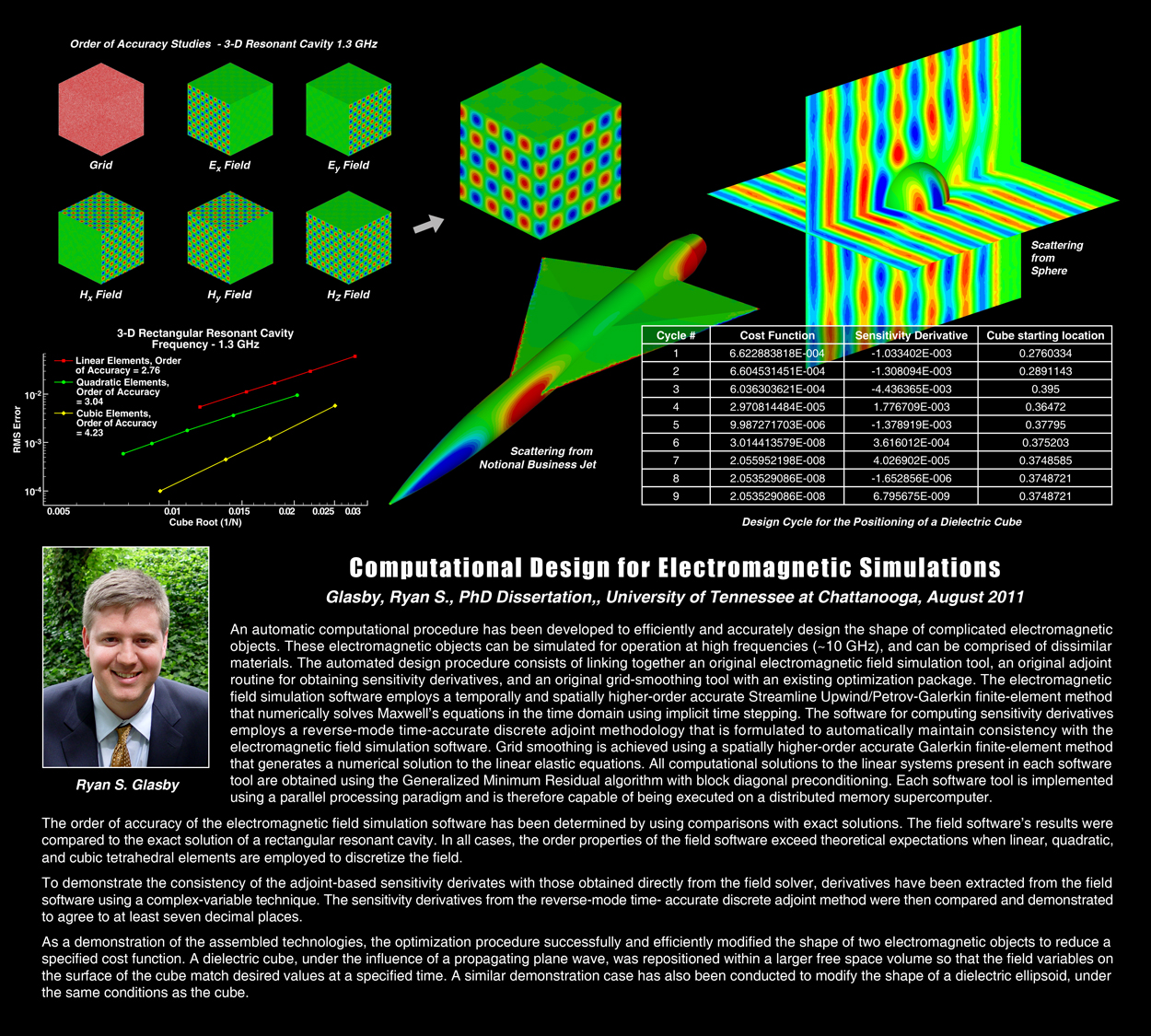Ryan Glasby
Computational Design for Electromagnetic Simulations
A Dissertation Presented for the Doctor of Philosophy in Computational Engineering, The University of Tennessee at Chattanooga
Ryan S. Glasby, August 2011
Abstract:
An automatic computational procedure has been developed to efficiently and accurately design the shape of complicated electromagnetic objects. These electromagnetic objects can be simulated for operation at high frequencies (~10 GHz), and can be comprised of dissimilar materials. The automated design procedure consists of linking together an original electromagnetic field simulation tool, an original adjoint routine for obtaining sensitivity derivatives, and an original grid-smoothing tool with an existing optimization package. The electromagnetic field simulation software employs a temporally and spatially higher-order accurate Streamline Upwind/Petrov-Galerkin finite-element method that numerically solves Maxwell’s equations in the time domain using implicit time stepping. The software for computing sensitivity derivatives employs a reverse-mode time-accurate discrete adjoint methodology that is formulated to automatically maintain consistency with the electromagnetic field simulation software. Grid smoothing is achieved using a spatially higher-order accurate Galerkin finite-element method that generates a numerical solution to the linear elastic equations. All computational solutions to the linear systems present in each software tool are obtained using the Generalized Minimum Residual algorithm with block diagonal preconditioning. Each software tool is implemented using a parallel processing paradigm and is therefore capable of being executed on a distributed memory supercomputer.
The order of accuracy of the electromagnetic field simulation software has been determined by using comparisons with exact solutions. The field software’s results were compared to the exact solution of a rectangular resonant cavity. In all cases, the order properties of the field software exceed theoretical expectations when linear, quadratic, and cubic tetrahedral elements are employed to discretize the field.
To demonstrate the consistency of the adjoint-based sensitivity derivates with those obtained directly from the field solver, derivatives have been extracted from the field software using a complex-variable technique. The sensitivity derivatives from the reverse-mode time- accurate discrete adjoint method were then compared and demonstrated to agree to at least seven decimal places.
As a demonstration of the assembled technologies, the optimization procedure successfully and efficiently modified the shape of two electromagnetic objects to reduce a specified cost function. A dielectric cube, under the influence of a propagating plane wave, was repositioned within a larger free space volume so that the field variables on the surface of the cube match desired values at a specified time. A similar demonstration case has also been conducted to modify the shape of a dielectric ellipsoid, under the same conditions as the cube.
Click here to access a full copy of Ryan's dissertation.
